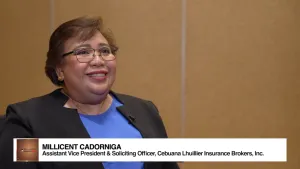
Mining insurance rates in Asia show slight decrease in 2024
Singapore’s property reinsurance rates showed small reductions in risks outside NatCats.
Mining insurance rates in Asia saw single-digit decreases over the past year, with local mining companies generally placing liability risks in domestic markets, according to Marsh’s Mining Market Update 2024 report.
Regulatory differences and relatively low liability limits, often managed through treaties or co-sharing arrangements, contributed to competitive domestic pricing.
Local insurers typically did not differentiate mining risks from other industrial exposures as international insurers do.
In Singapore, property reinsurance rates showed small reductions for well-managed risks outside major natural catastrophe (Nat Cat) zones, while high-risk operations faced stable or slight increases of around 5%.
Coverage for machinery breakdown, Nat Cat events, tailings, and underground losses remained sub-limited by many insurers.
ESG considerations, such as effective tailings storage facility (TSF) monitoring and community protection, remained central to underwriting decisions.
Additional capacity from international reinsurers helped reduce reliance on costlier excess markets.
In China, a major reinsurer’s reduced contractual support led to increased demand for higher-cost international reinsurance capacity, pushing overall rates higher.
Coverage for strikes, riots, civil commotion (SRCC), and terrorism was also restricted despite growing demand.
Indonesia followed international property rate trends, with stable or slightly reduced rates for well-managed non-coal risks. However, coal risks saw reduced support, aligned with reinsurers' guidance.
A cap on co-insurance participants, now limited to eight reinsurers, further tightened local market capacity, increasing reliance on international reinsurance and driving rates upward.
Coverage restrictions, such as sub-limits for port blockage extensions, were also evident.
Australia’s domestic market faced significant weather-related losses over the past year, increasing scrutiny on policy terms and Nat Cat exposures.
Despite this, local insurers remained committed to fostering growth and improving market conditions.
Volatile commodity prices led insurers to introduce measures such as price caps and adjustments to better quantify exposures, though these provisions were not widespread due to competition.



















 Advertise
Advertise








